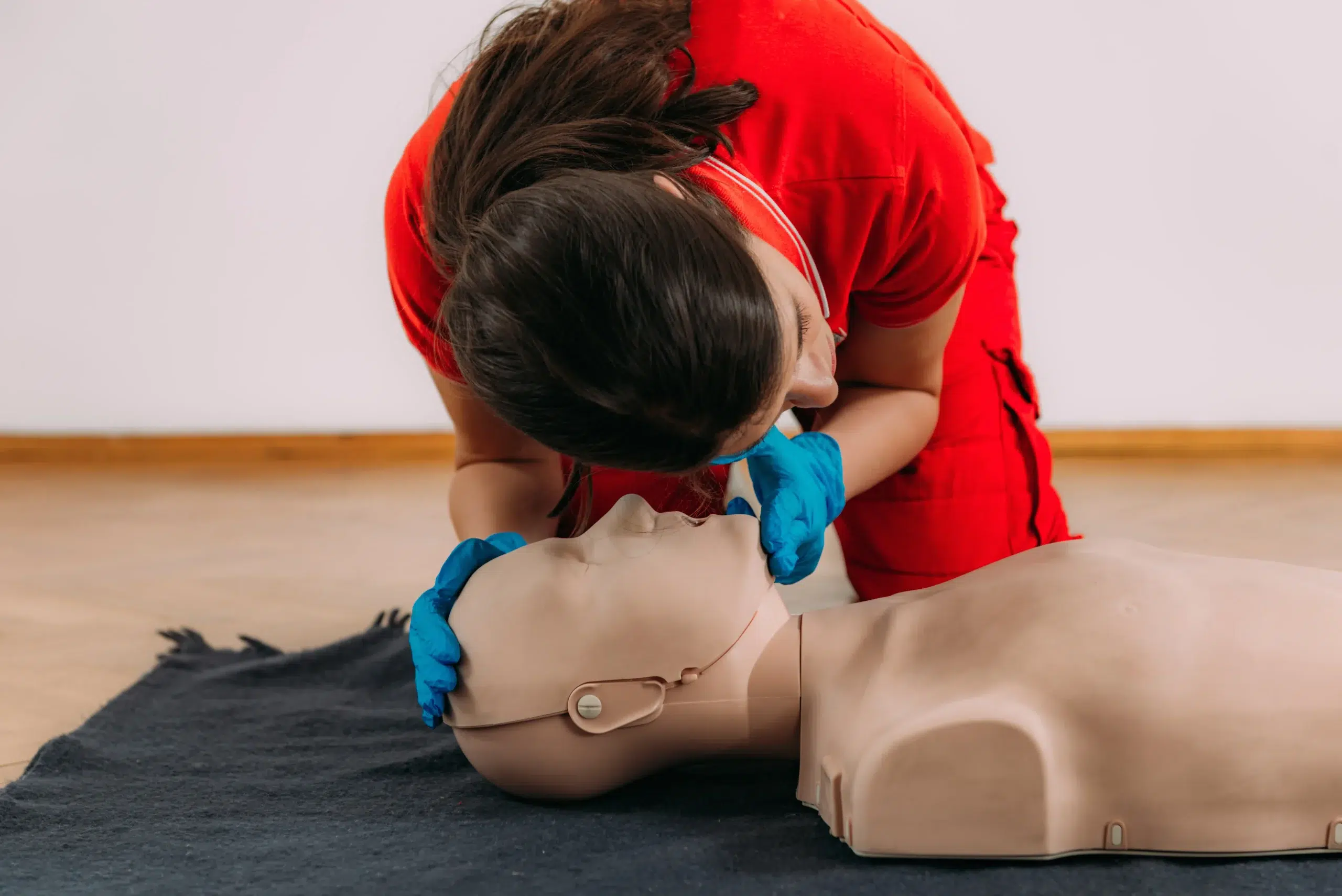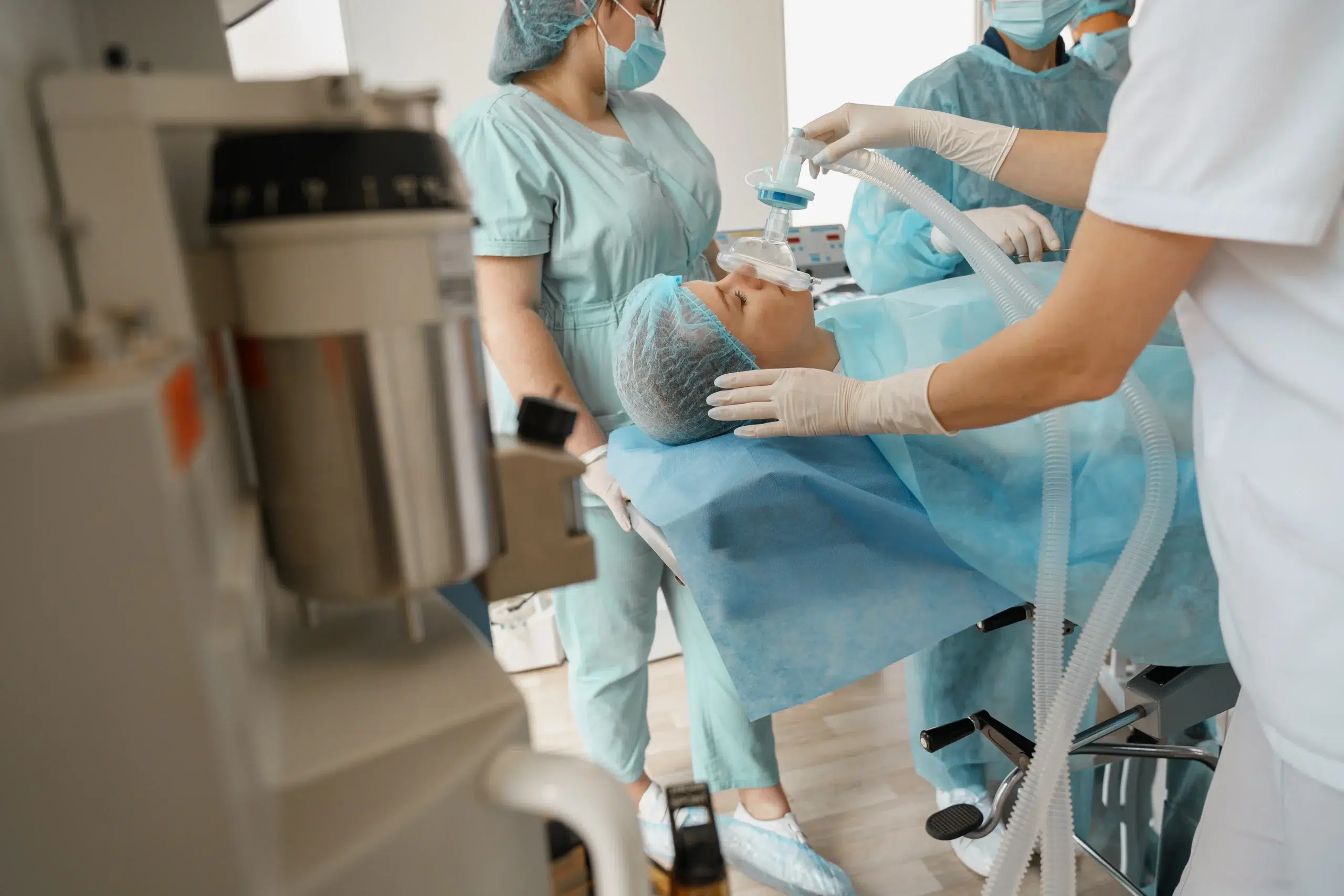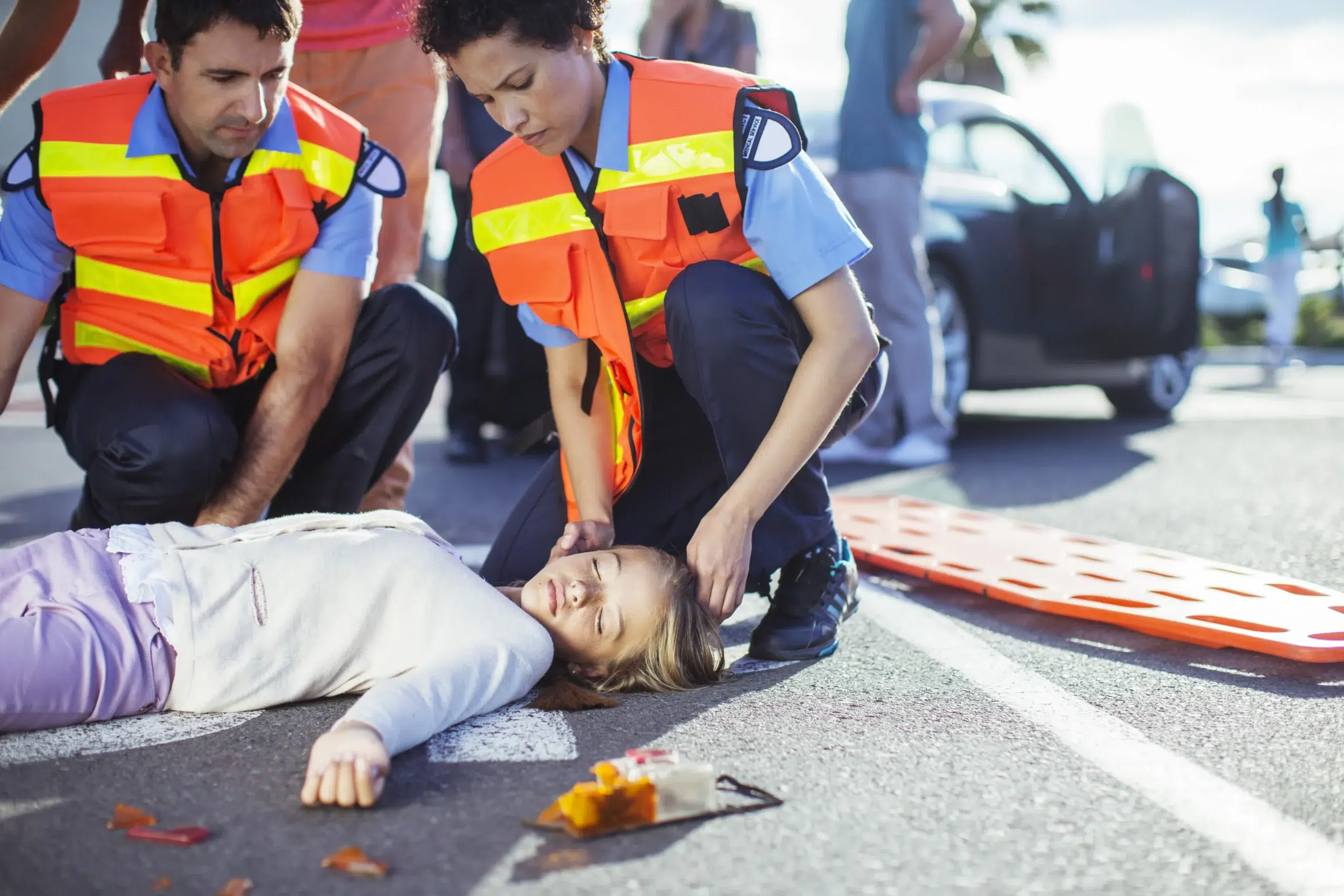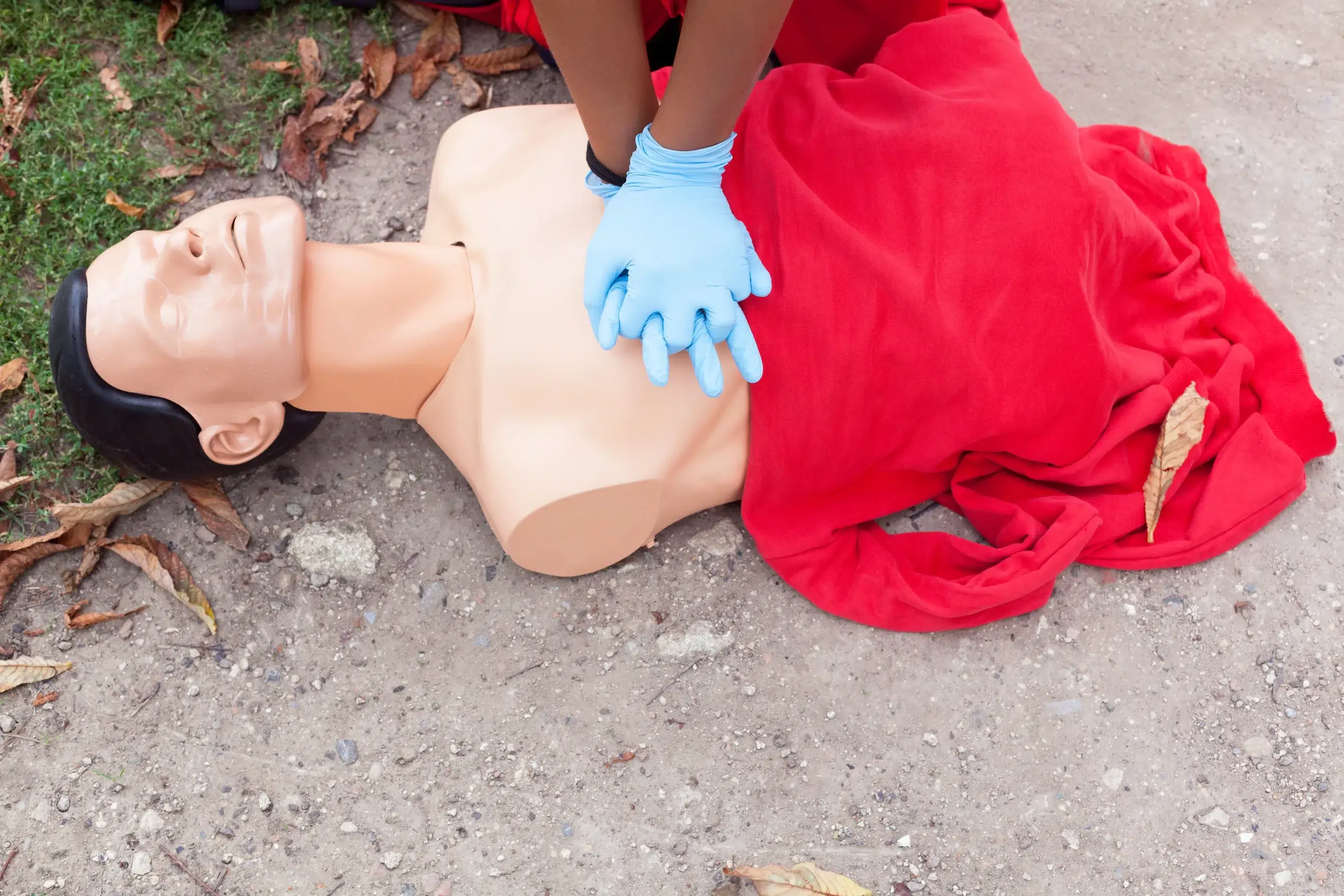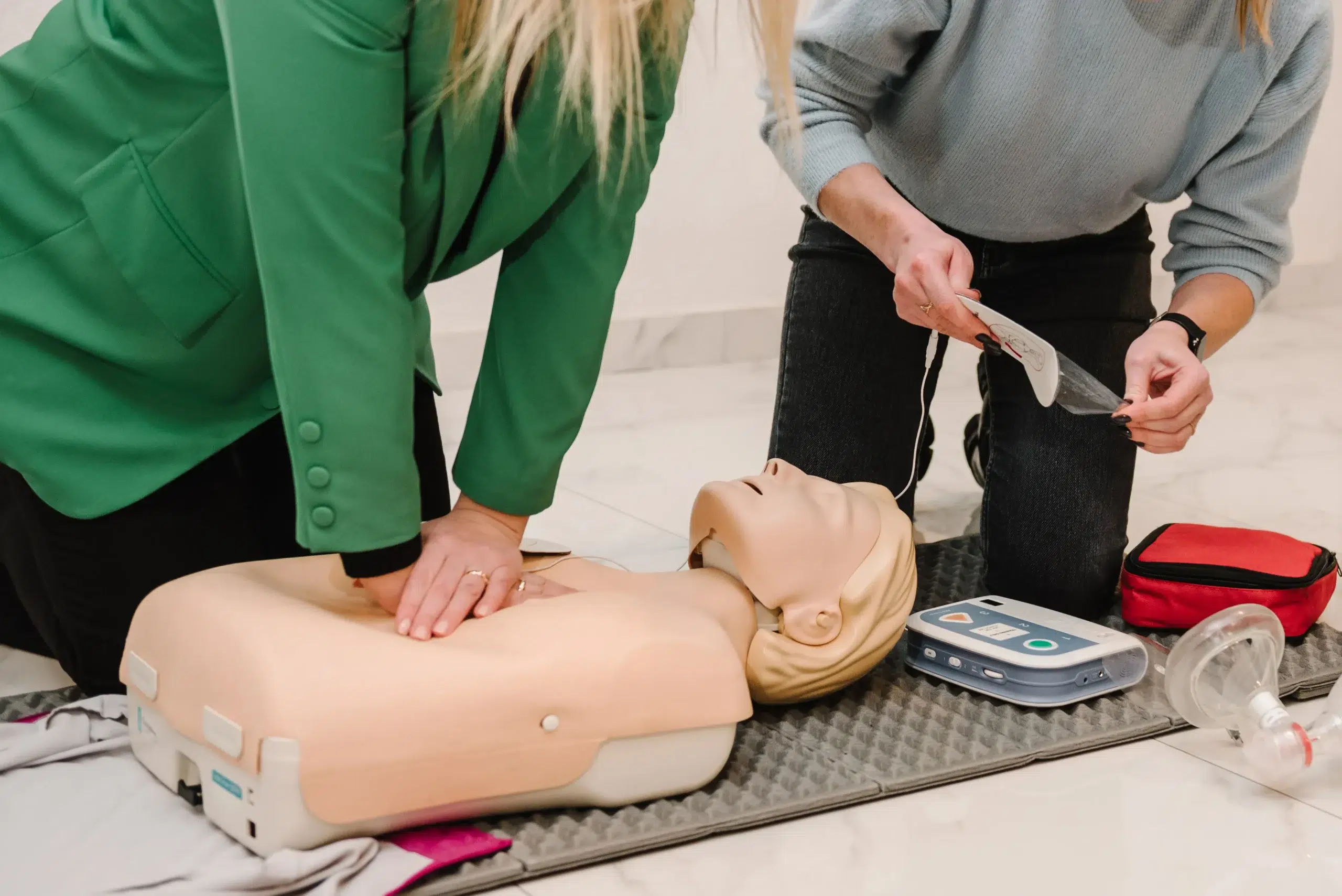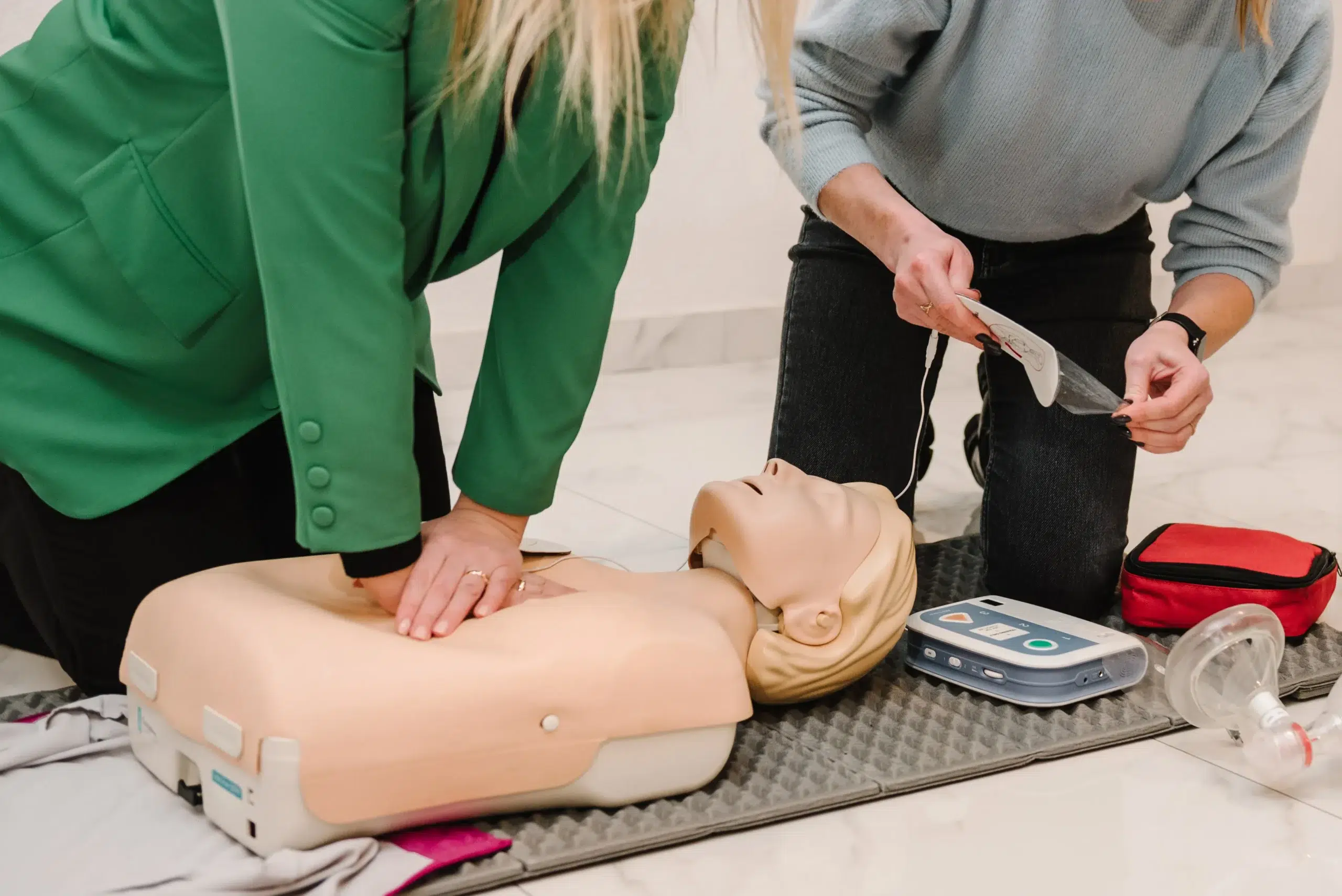Accidents happen. Emergencies arise. Being equipped to handle these situations can make all the difference. First-aid training provides you with the knowledge and skills to respond effectively in times of need, potentially saving lives and minimizing harm. If your search for “first-aid classes near me” has brought you here, you’re in the right place. This comprehensive guide will walk you through the process of finding the perfect first-aid course, from understanding the different levels of training to choosing a reputable provider and preparing for your class. We’ll also delve into the benefits of first-aid certification and how it can enhance your personal and professional life. Get ready to empower yourself with the skills that can make a real difference.
Key Takeaways
- First-aid skills are essential for everyone: Equipping yourself with the knowledge to handle medical emergencies, from minor injuries to life-threatening events, can make a real difference. Explore the various types of first-aid training available, including basic first aid, CPR/AED certification, and specialized courses.
- Find a course that fits your lifestyle: Consider in-person training for hands-on learning, online courses for flexibility, or blended learning for a combination of both. Research different providers, compare costs, and look for group discounts.
- Prepare for your training and maximize your learning: Choose a reputable provider with accredited programs and experienced instructors. Check reviews and testimonials to gauge the quality of instruction. Before your class, familiarize yourself with basic first-aid concepts and gather any required materials.
What are First-Aid Classes?
First-aid classes equip you with the skills to respond effectively to medical emergencies. These classes cover a range of topics, from treating minor injuries to managing life-threatening situations. Whether you’re looking for basic life support skills or specialized training, first-aid classes offer valuable knowledge that can make a real difference.
Basic First Aid
Basic first-aid classes teach you how to address common injuries like cuts, burns, sprains, and fractures. You’ll learn essential techniques such as wound care, applying bandages and splints, and controlling bleeding. These classes also cover recognizing and responding to medical emergencies like allergic reactions, choking, and heart attacks. While you can learn some basic first aid through online resources, a formal first-aid class provides hands-on practice and expert guidance. This practical experience builds your confidence and prepares you to act quickly and effectively in a real emergency.
CPR and AED Training
CPR (cardiopulmonary resuscitation) and AED (automated external defibrillator) training are often included in first-aid classes or offered as standalone courses. CPR teaches you how to perform chest compressions and rescue breaths to maintain blood flow and oxygenation in someone who has stopped breathing or has no pulse. AED training teaches you how to use an AED, a portable device that can deliver an electric shock to restore a normal heart rhythm in cases of sudden cardiac arrest. Learning CPR and how to use an AED can dramatically increase the chances of survival for someone experiencing a cardiac emergency. Citrus Heights CPR classes offer this vital training.
Specialized First-Aid Training
Beyond basic first aid and CPR/AED training, there are specialized first-aid courses designed for specific needs and environments. These might include wilderness first aid for outdoor enthusiasts, pediatric first aid for childcare providers, or occupational first aid for workplace settings. Specialized training often delves deeper into specific injuries or illnesses relevant to the target group. For example, wilderness first aid might cover treating snakebites or hypothermia, while pediatric first aid would focus on caring for infants and children. Choosing specialized first-aid training ensures you have the skills and knowledge to handle emergencies in your particular environment or profession.
Find First-Aid Classes Near You
Finding the right first-aid class involves a bit of research to ensure it aligns with your specific needs and schedule. Here’s how to get started:
Online Search Tools
Start by using online search tools like Google, Bing, or Yelp. Search for “first-aid classes near me” or “first-aid certification [your city/region]” to find local providers and compare what they offer. Review course descriptions carefully to confirm the format (online, in-person, or blended learning) works for you and the certification meets any workplace requirements. The Red Cross website offers a convenient class search tool.
Local Community Resources
Check with community centers, libraries, fire departments, and local hospitals. These organizations often host first-aid and CPR training sessions, sometimes at lower prices. Citrus Heights offers a variety of CPR and first-aid courses with flexible schedules—weekdays, weekends, in-person group sessions, and convenient in-home training. Contact your local Citrus Heights CPR Classes office for information on class availability.
Popular First-Aid Training Providers
Several well-known organizations provide nationally recognized first-aid certifications.
American Red Cross
The American Red Cross offers a range of training courses, from standard first aid and CPR/AED to specialized certifications like lifeguarding. Their many training centers make finding a class near you relatively easy.
American Heart Association
The American Heart Association is another reputable provider of CPR, first aid, and advanced life support training. Many organizations, including Safety Training Seminars, offer AHA-certified courses, ensuring your certification is widely accepted.
National Safety Council
The National Safety Council also provides accredited first-aid training programs. When choosing a provider, always confirm their accreditation to ensure your certification meets established standards.
Citrus Heights CPR Classes
Citrus Heights CPR Classes offers comprehensive first-aid training covering various situations, empowering you to respond confidently and provide immediate care when needed. They also offer specialized training like EMSA Child Care Health & Safety. Check their website for course schedules and discount group class options.
What to Expect in a First-Aid Class
Knowing what to expect can help you feel prepared and confident going into your first-aid training. Whether you’re taking a class for personal growth or to meet job requirements, understanding the curriculum, the hands-on components, and the evaluation methods will make the learning process more effective.
Course Content Overview
First-aid classes cover essential life-saving techniques. You’ll learn to assess emergency situations, respond to common injuries like cuts and burns, and manage medical emergencies such as choking or a heart attack. While you can learn basic first aid through books or online resources, a formal class offers a structured learning environment and expert guidance. This ensures you develop a strong understanding of first-aid principles and best practices. Formal training often includes CPR certification—a valuable asset. Citrus Heights CPR Classes offers a comprehensive BLS course covering these essential skills.
Hands-on Practice
First-aid training isn’t just about lectures and reading. A significant part of your class will involve hands-on practice, allowing you to apply what you learn in a simulated environment. You’ll work with training manikins and other equipment to practice bandaging wounds, performing CPR, and using an AED. This practical experience builds your confidence and prepares you to react effectively in a real emergency. Taking a first-aid class with friends, family, or colleagues can also strengthen relationships and create a shared learning experience. Check out our discount group rates for a cost-effective way to train together.
Assessment Methods
Most first-aid courses include some type of assessment to ensure you’ve understood the key concepts and can perform the necessary skills. This might be a written exam, practical demonstrations, or a combination of both. The goal is to confirm you’re ready to provide effective assistance in a real emergency, not to add stress. Successful completion earns you a first-aid certification, demonstrating your competence and commitment to safety. This is especially important for workplaces that require employees to have current first-aid training. Contact us to learn more about our certification process and how we can help you meet your training objectives.
Choose the Right Class Format
Finding the right first-aid class format depends on your learning style, schedule, and budget. Let’s explore in-person, online, and blended learning options so you can make the best choice.
In-Person Training
In-person training provides hands-on learning, ideal for mastering crucial first-aid skills. You’ll work directly with a certified instructor, ask questions in real-time, and practice techniques on mannequins and with classmates. This classroom setting fosters teamwork and allows for immediate feedback. The dynamic environment and face-to-face interaction can be especially beneficial for those who thrive in collaborative settings. However, in-person classes require a fixed schedule, which might not work for everyone. If you prefer a structured learning environment and value direct interaction, in-person training might be a good fit.
Online Courses
Online courses offer flexibility for busy schedules or limited access to in-person classes. You can learn at your own pace, revisit materials as needed, and complete the coursework from anywhere with an internet connection. Studies show online learning can be just as effective as in-person instruction, especially for theoretical concepts. Organizations like the American Heart Association offer a variety of online CPR and first-aid classes. Keep in mind that online courses typically require self-discipline and may not provide the same level of hands-on practice as in-person training. If you prefer a self-directed approach and need a flexible schedule, explore online options.
Blended Learning
Blended learning combines online and in-person instruction. You’ll complete online modules covering theoretical concepts and simulations, then attend an in-person skills session to practice techniques and receive instructor feedback. This hybrid approach offers flexibility while ensuring you develop practical skills. Blended learning is an excellent option for a comprehensive learning experience with an adaptable schedule. Citrus Heights CPR Classes offers a variety of blended learning courses. If you appreciate the convenience of online learning but also value hands-on practice, consider a blended learning format.
How Much Does First-Aid Training Cost?
Deciding to get first-aid certified is a smart move, but figuring out the cost can feel a little tricky. We’ll break it down for you. Several factors influence the final price, and understanding them helps you budget effectively.
Typical Price Ranges
First-aid and CPR certification costs depend on the training level, your location, and the certifying organization. Basic adult CPR classes typically range from $20 to $55, while adding pediatric CPR might increase the price to $40. Combined CPR and first-aid certification often costs between $40 and $60. More advanced certifications, like BLS for healthcare providers, generally cost more, around $80, with first aid as an add-on for about $20 extra.
Factors Affecting Cost
Beyond the course type, a few other things affect the price. The certifying organization plays a big role. Nationally recognized organizations like the American Heart Association and the American Red Cross often have set pricing. Independent training centers may offer more competitive rates. Location matters too. First-aid training costs can vary between cities, even within the same state. Finally, the class format—in-person, online, or blended—can also influence the cost.
Discounts and Group Rates
One of the best ways to save on first-aid training is to sign up with a group. Many providers offer group discounts, making it cost-effective for workplaces, community groups, or friends. Workplace CPR training for eight or more people can cost around $35 to $45 per person. Look for special promotions or discounts from training providers, especially during certain times of the year. Citrus Heights CPR Classes offers various scheduling options, from weekdays to weekends, and formats, including in-person group sessions and in-home training, so you can find a class that works for you. They also have a low price guarantee, so you can feel confident you’re getting good value. For first-aid training in Citrus Heights, contact providers like Safety Training Seminars or Citrus Heights CPR Classes to compare pricing and find the best fit.
Get Certified in First Aid
So, you’re ready to take the leap and become certified in first aid? Great! Knowing what to expect can make the whole process smoother.
Steps to Obtain Certification
First things first, find a reputable training provider. I recommend checking out organizations like the American Red Cross or the American Heart Association. They offer high-quality, standardized courses that are widely recognized. Another option is to search for certified instructors in your area. Make sure the program you choose aligns with any specific requirements you might have, like workplace regulations or professional standards. Once you’ve found a good fit, simply register for the class and you’re on your way! Citrus Heights CPR Classes offers a low price guarantee on all of our courses.
Validity Period and Renewal
Most first-aid certifications are valid for about two years. After that, you’ll need to renew your certification to stay current with the latest guidelines and techniques. This usually involves taking a refresher course. Keeping your certification up to date ensures you’re always prepared to provide effective assistance in an emergency. It’s a small investment to make for such a valuable skill. Contact us today to learn more about our first aid classes!
Choose a Reputable First-Aid Provider
Finding the right first-aid training provider is crucial for a valuable learning experience. It ensures you receive high-quality instruction and a recognized certification. Here’s what to consider when making your decision:
Accreditation and Instructor Qualifications
Look for providers accredited by nationally recognized organizations like the American Heart Association or the American Red Cross. Accreditation means the training program meets established standards for course content, instructor qualifications, and training materials. This assures you of a comprehensive and up-to-date curriculum. Choosing an accredited program also means your certification will be widely accepted. It’s equally important to verify instructor qualifications. Experienced and certified instructors bring real-world knowledge and practical skills to the classroom, creating a more engaging and effective learning environment. They should possess occupational knowledge and competence in first aid, ensuring you receive accurate and reliable instruction. For example, Citrus Heights CPR classes are accredited by the American Heart Association and offer a low-price guarantee.
Reviews and Testimonials
Reading reviews and testimonials from past students offers valuable insights into a provider’s reputation and the quality of their courses. Look for comments about the instructors’ teaching style, the course content, and the overall learning experience. Positive feedback can give you confidence in your choice, while negative reviews can highlight potential issues. Remember, a reputable provider will be transparent about their certifications, instructor experience, and student feedback. Don’t hesitate to ask questions and gather all the necessary information before enrolling in a first-aid class. This due diligence ensures you receive the best possible training and gain the confidence to respond effectively in emergencies. Dispelling common myths about first aid is crucial for fostering a more accurate understanding of its importance and accessibility. By addressing these misconceptions, we can encourage more people to seek out first-aid training and be prepared for emergencies.
Prepare for Your First-Aid Class
Getting ready for your first-aid class doesn’t require a ton of prep work, but a little planning goes a long way. Here’s how to make sure you’re set up for a successful learning experience:
Required Materials
Most first-aid courses provide the essential materials you’ll need for hands-on practice, like bandages, antiseptic wipes, gloves, and CPR mannequins. Reach out to your chosen training provider to confirm exactly what they supply and if there’s anything you need to bring. While you can learn some basic first aid through books or online resources, a formal class offers invaluable hands-on practice.
Pre-Course Study Tips
While pre-course studying isn’t usually mandatory for basic first aid, familiarizing yourself with key concepts can enhance your learning. A quick review of basic anatomy or common first-aid scenarios can give you a head start. The goal is to feel confident and prepared to apply these life-saving skills. Learning first aid can quite literally save lives, and studies show that prompt first aid can significantly improve outcomes in emergencies.
What to Bring
Comfort is key! Wear comfortable clothing suitable for moving around and participating in practical exercises. A small notebook and pen can be handy for jotting down notes. Consider bringing a water bottle to stay hydrated, especially during longer sessions. First-aid training offers a lifetime of advantages, so investing a little time in preparation is worthwhile.
Benefits of First-Aid Training
Learning first aid offers significant advantages, from personal preparedness to career advancement and community impact. Investing in this essential skill empowers you to handle emergencies effectively and make a real difference.
Personal Preparedness
First-aid training equips you with the skills to respond confidently to everyday injuries and medical situations. Whether it’s a minor cut, a burn, or a more serious incident, you’ll be prepared to provide immediate care and potentially prevent a situation from worsening. While you can learn basic first aid from books or online resources, a formal class offers invaluable hands-on practice, giving you the confidence to apply your knowledge under pressure. This practical experience is crucial for effectively managing real-life emergencies. Knowing how to stabilize someone before professional help arrives can significantly improve their outcome.
Professional Development
First-aid training can be a valuable asset in your career. Many professions, from healthcare and childcare to education and construction, require or highly recommend first-aid certification. Having these credentials on your resume can give you a competitive edge and demonstrate your commitment to safety. Beyond specific job requirements, first-aid skills can enhance your value in any workplace. Employers recognize the importance of having trained first-aiders on their teams, creating a safer work environment and demonstrating a proactive approach to risk management. Certified first-aiders on staff can even lower insurance premiums in some cases.
Community Impact
Becoming first-aid certified allows you to contribute positively to your community. You’ll be equipped to assist family, friends, neighbors, and even strangers in times of need. Prompt first aid can significantly impact survival rates in emergencies, as shown in a British Red Cross study. By taking a first-aid class with others, you also contribute to a more prepared and resilient community. Group training fosters teamwork and strengthens relationships, creating a network of people ready to respond to emergencies. This collective preparedness can make a substantial difference in the overall safety and well-being of your community.
Related Articles
- Essential Workplace CPR and First-Aid Training Guide
- The Importance of CPR in Saving Lives
- Your Guide to First Aid Training in Orangevale – Citrus Heights CPR Classes
- CPR & First-aid Classes in Citrus Heights, CA – Citrus Heights CPR Classes
- How to Find BLS Training Near Me – Citrus Heights CPR Classes
Frequently Asked Questions
What’s the difference between basic first aid and specialized first-aid training? Basic first aid covers common injuries like cuts, burns, and sprains, while specialized training focuses on specific environments or demographics, such as wilderness first aid or pediatric first aid. The best choice depends on your individual needs and interests.
How do I choose the right first-aid class format for me? Consider your learning style and schedule. In-person classes offer hands-on practice and direct interaction with instructors. Online courses provide flexibility, while blended learning combines both formats. Think about what works best for your learning preferences and availability.
Besides the American Red Cross and American Heart Association, are there other reputable first-aid training providers? Yes, the National Safety Council offers accredited first-aid training programs. Also, look for local providers like Safety Training Seminars and Citrus Heights CPR Classes, which often provide specialized courses tailored to community needs. Always confirm a provider’s accreditation to ensure your certification meets established standards.
How long is a first-aid certification valid, and how do I renew it? Most certifications are valid for two years. Renewal typically involves taking a refresher course to stay updated on the latest guidelines and techniques. Check with your certifying organization for specific renewal requirements.
What if I’m nervous about the assessment portion of a first-aid class? The assessments are designed to confirm you’ve grasped the key concepts and can perform the skills, not to add stress. Most courses use a combination of written exams and practical demonstrations. Talk to your instructor if you have any concerns. They are there to support you and help you succeed.


